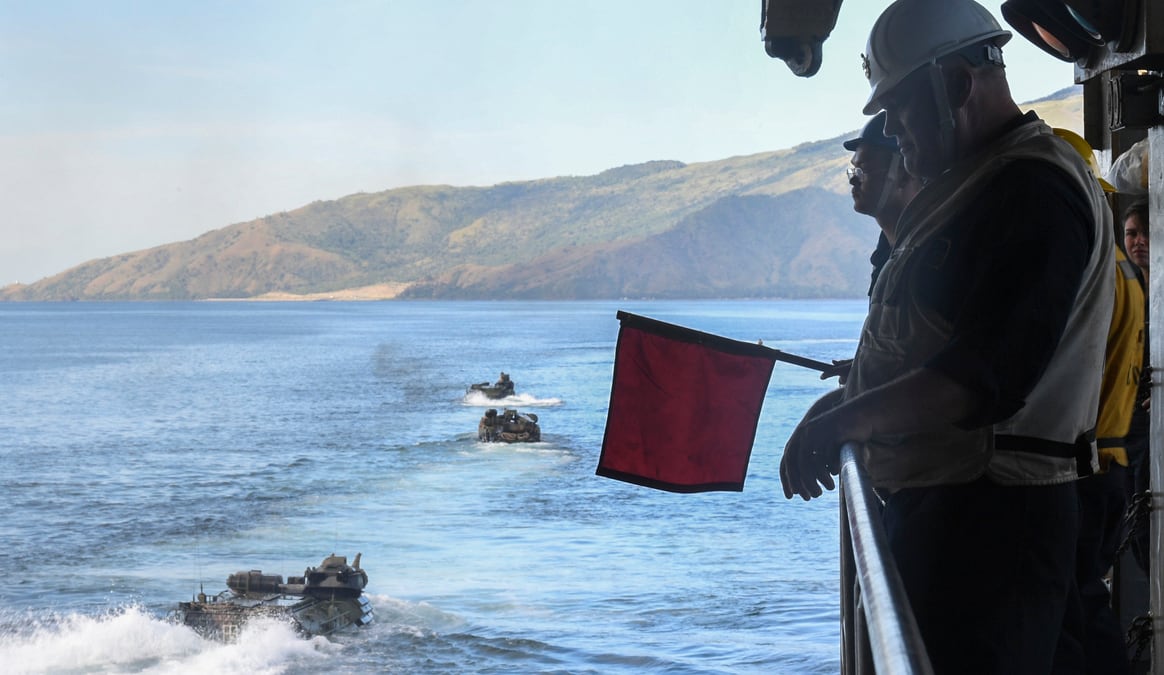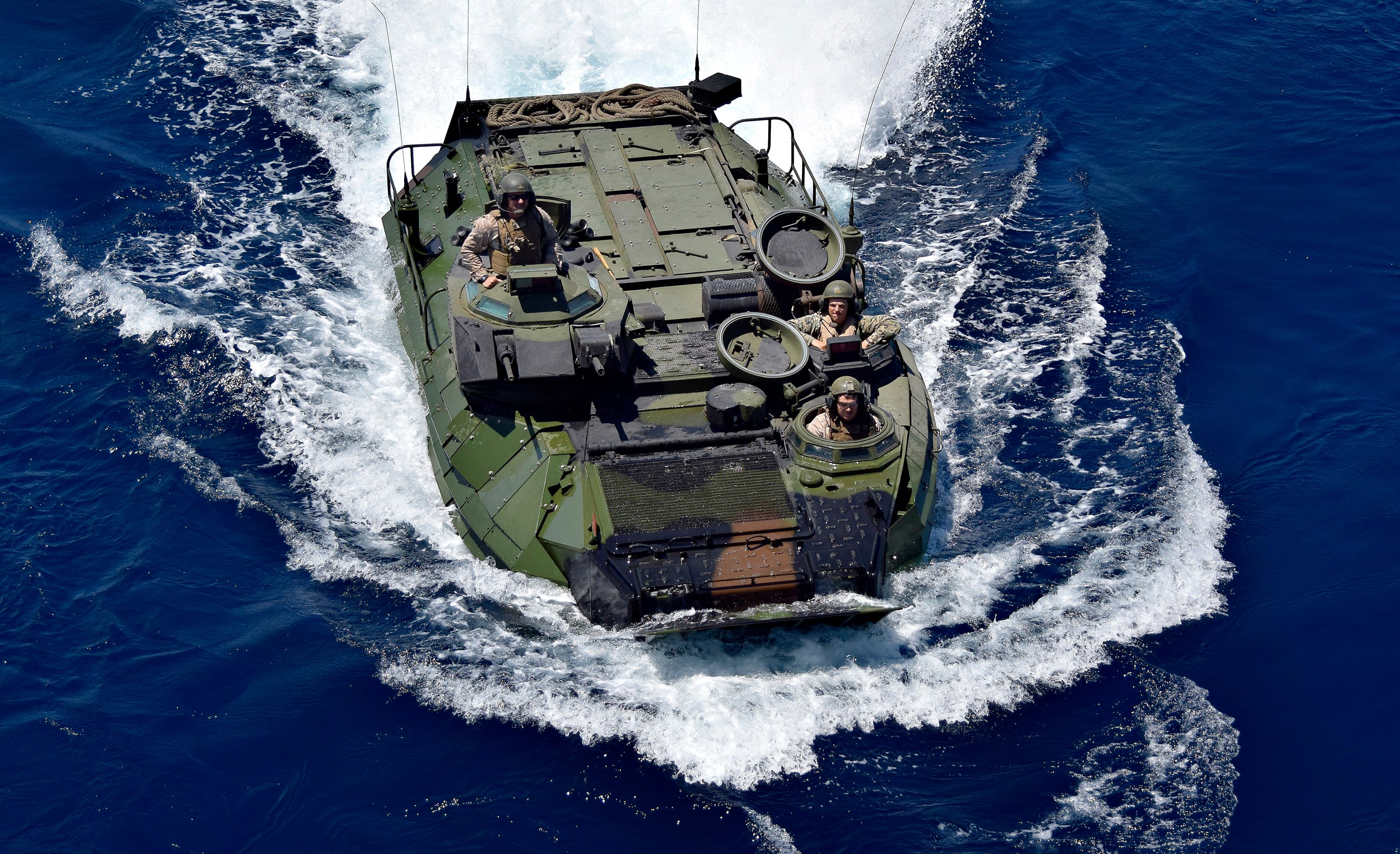Around 5:45 p.m. Thursday an amphibious assault vehicle from the 15th Marine Expeditionary Unit started taking on water and “rapidly sank” off the coast of California.
As of Friday, one Marine had been pronounced dead, with another two in a San Diego, hospital in critical condition. Eight others were still missing.
A new document acquired by Marine Corps Times provides more insight into the final moments of the vehicle.
The AAV was returning to the amphibious transport dock Somerset after conducting a training raid at San Clemente Island, California. The vehicle had 15 Marines and one sailor aboard at the time, according to the document and later confirmed by the Marine Corps.
RELATED

Shortly after taking on water the vehicle “rapidly sank” with all 16 service members still onboard, the document reveals.
The number aboard was not maximum capacity, but still a tight fit, according to Tagen Schmidt, a veteran AAV crewman who survived a fiery AAV accident in 2017.
“With all the gear and personnel you would definitely be rubbing shoulders with the person next to you it would be a very tight fit,” Schmidt said.
And “26 tons sinks really fast,” Jacob Aronen, who previously served as a corporal with the 3rd Assault Amphibian Battalion, told Marine Corps Times Friday.
Aronen said the main way to escape a sinking AAV is through the top hatches, “which often have handles that are so stiff you need to beat them with a hammer to open.”
He added the weight of the hatches often requires two Marines to push open and would get even heavier as the vehicle goes underwater.
If the Marines are unable to to get the hatches open before the vehicle sinks under more than three feet of water, opening them would become “extremely difficult if not impossible,” Schmidt said.
Aronen said, “If they got the top hatches open it’s likely that most if not all of the Marines in the back would have been able to get out regardless of how fast it was sinking.”
“If not, it would be nearly impossible for a lot of them to escape,” he added.
If the top hatches weren’t open, the Marines would be forced to exit through either the rear hatch, where they would normally exit on the beach. Otherwise, they’d be forced to fit through the tight exits provided by the troop commander and drivers hatches or the turret.
“All pretty tight squeezes especially in full gear,” Aronen said.
Schmidt was less optimistic about the ability for Marines to escape if they were unable to open the top hatches, saying the only option at that point was to “pray you float back up.”
Eight of the military personnel aboard the AAV were able to escape the vehicle and were immediately taken to the Somerset, according to the document.
Three of the Marines rescued were immediately rushed to a nearby San Diego hospital, where one Marine was pronounced dead, one Marine was listed as being in critical condition and another Marine was listed as stable, according to an earlier press release.
The search for the remaining eight troops is still underway, being conducted by several Navy ships, three Navy MH-60 helicopters alongside a U.S. Coast Guard cutter and a Coast Guard MH-60 helicopter.





